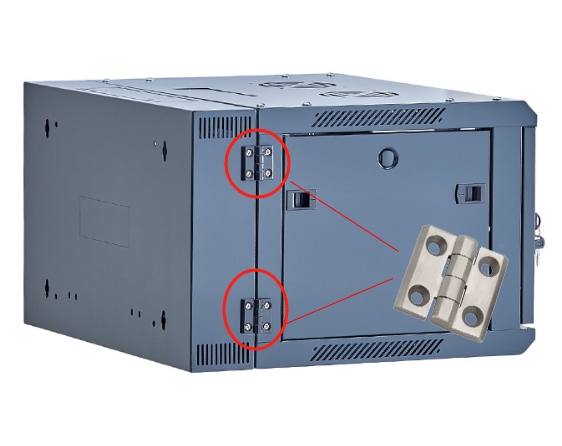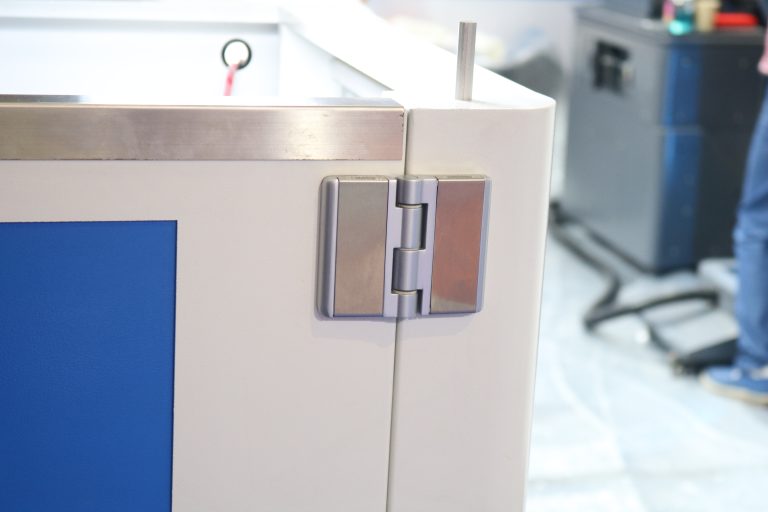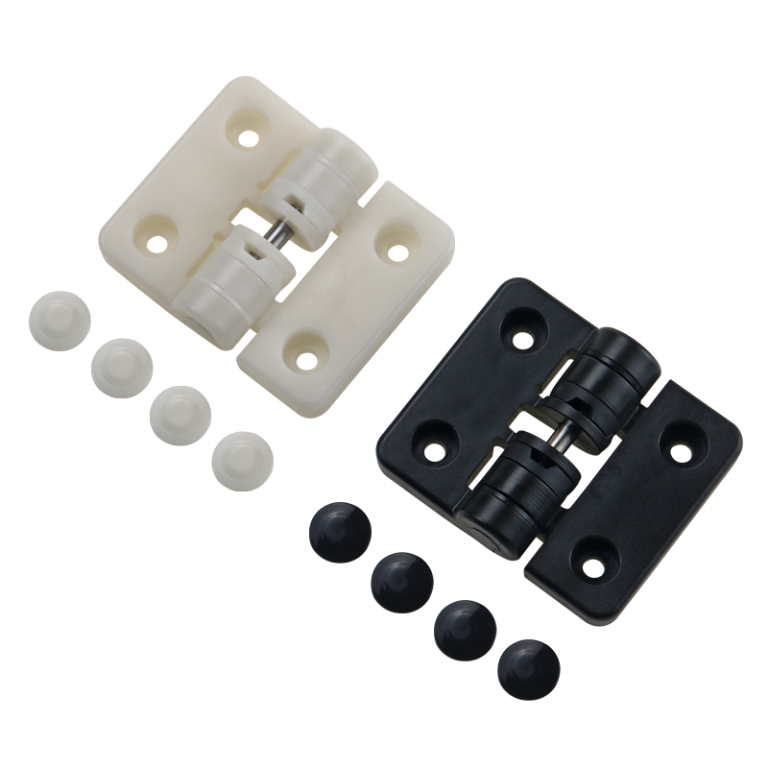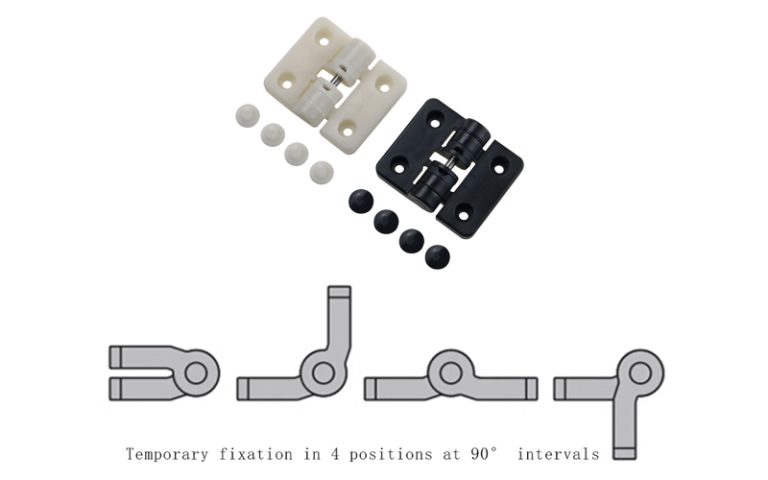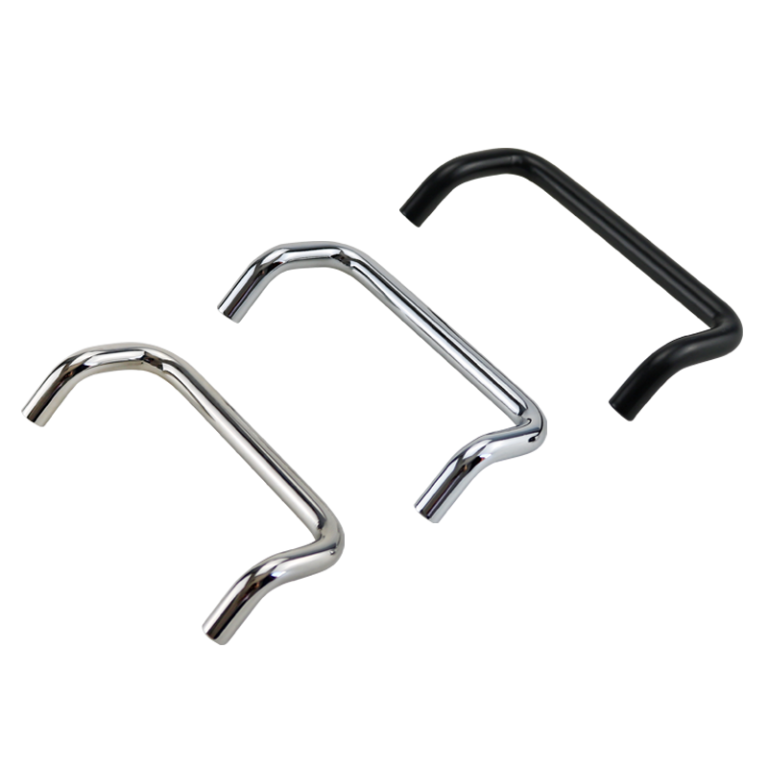HTAN is one of the leading manufacturers of industrial hinges, handles and latches in China.
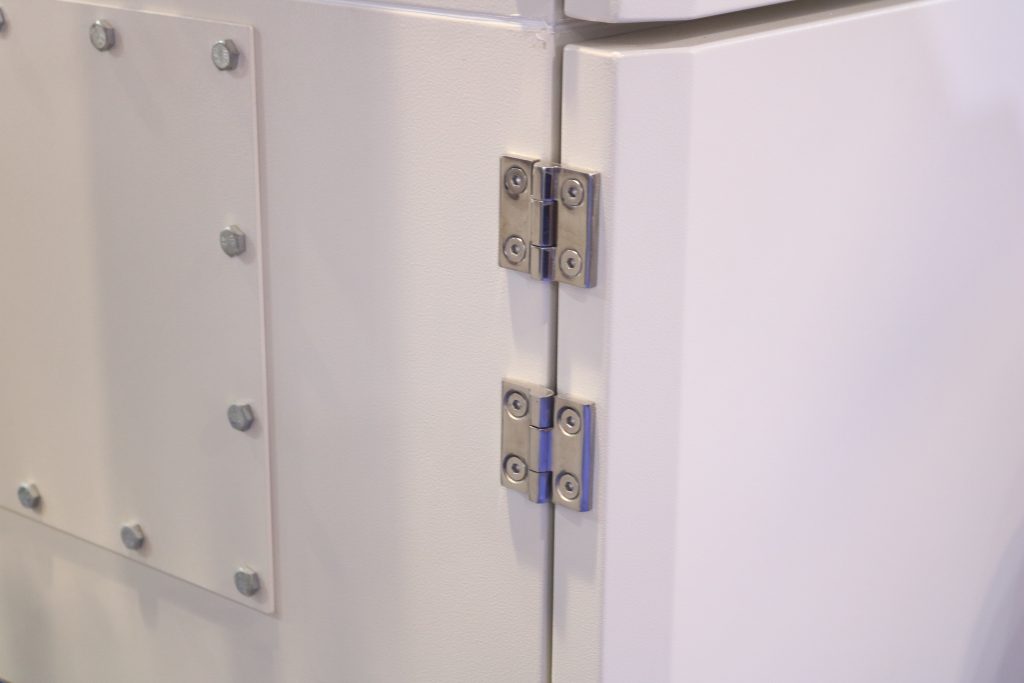
Stainless steel hinges are essential components in various industries and daily life, providing reliable connections and smooth rotation for doors, cabinets, and other objects.
This article delves into the world of stainless steel hinges, exploring their structure, types, materials, manufacturing processes, design considerations, installation methods, surface treatments, cost factors, and key terminology.
Whether you’re a professional in need of specific hinges or a homeowner looking to upgrade your fixtures, this guide will equip you with the knowledge to make informed decisions.
What Are Stainless Steel Hinges?
Stainless steel hinges are connecting parts made from stainless steel material that enable two objects, such as doors and door frames, to rotate flexibly for opening and closing. Their primary advantages include rust resistance, durability, and a clean appearance, making them suitable for use in damp, highly corrosive, or aesthetically pleasing environments.
Structure Principle
- Composition: Typically consists of two metal “blades” and a “pin” (small metal bar) connected.
- Fixing Method: Screw holes on the blades allow them to be fixed to doors or cabinets using screws.
- Swivel Principle: The pin serves as a pivot, enabling easy door opening and closing.
- Why Stainless Steel?: Stainless steel is inherently rust-proof, which significantly prolongs the service life of the hinges.
Applications
- Factory and Engineering: Electrical control cabinets, ship hatches, medical equipment, robot arms.
- Daily Life: Kitchen cabinets, bathroom doors, high-end furniture, windows of coastal buildings.
- Special Environments: Seaside areas (salt spray corrosion), chemical plants (chemical corrosion), hospitals (require cleaning).
Industrial stainless steel hinge application cases
Common Types of Stainless Steel Hinges
Each type of hinge features a unique design and specific uses:
Continuous hinge
- A very long strip, like a piano lid hinge;
- Strong support, suitable for heavy doors, toolboxes, industrial equipment doors, marine hatches
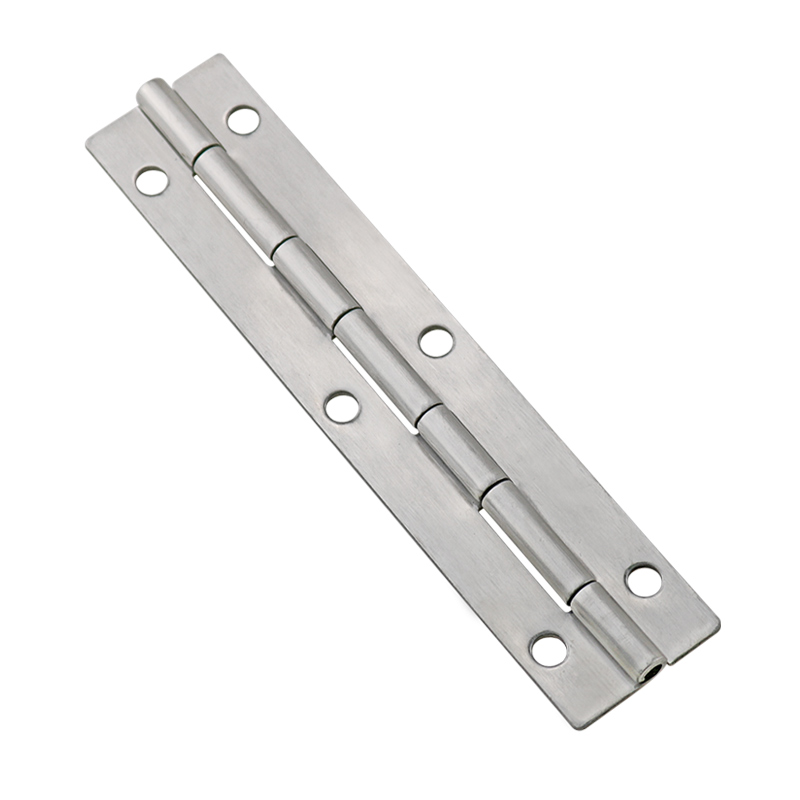
Concealed hinge
- Hinges are invisible when the door is closed, neat appearance
- High-end closets, modern style furniture

Flag hinges
- Decorative pattern, both practical and aesthetics
- Vintage furniture, European style doors and windows
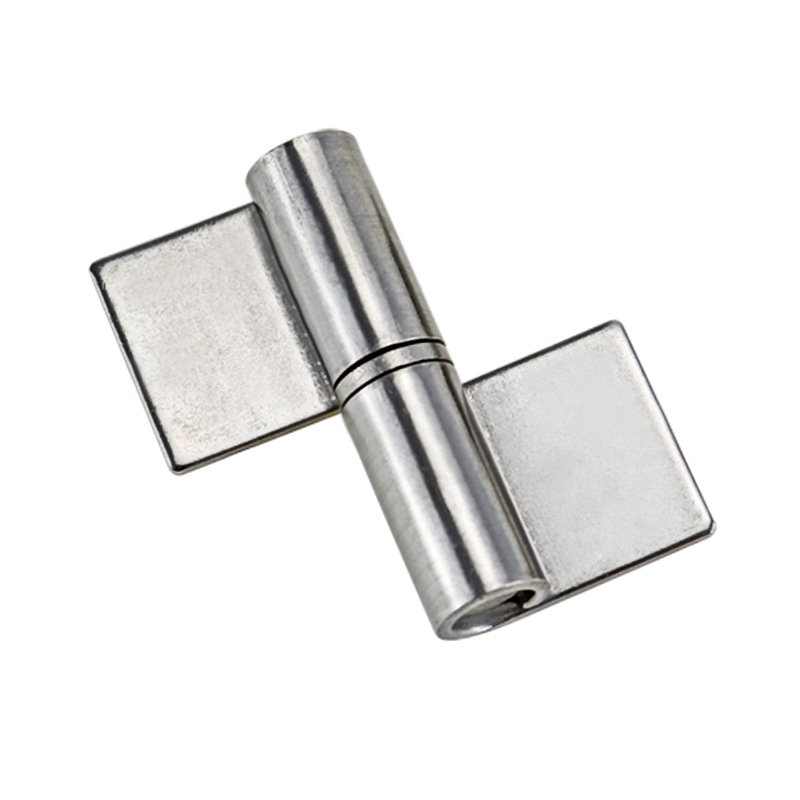
Spring hinge
- Built-in spring, the door can be closed automatically
- Hospital doors, fire doors, public places

Friction hinge
- Torsion when opening and closing the door to avoid collision
- Laboratory equipment, high-end office furniture

Material Selection: 304 vs. 316 Stainless Steel
- 304 Stainless Steel: Affordable and suitable for most everyday environments like homes and offices.
- 316 Stainless Steel: Contains molybdenum, offering stronger corrosion resistance, ideal for seaside, chemical plants, or hospitals.
- Other Materials: 303 stainless steel (easy to process), 310 stainless steel (high-temperature resistant), for special needs.
Manufacturing Process
- Stamping: Pressing stainless steel plates into hinge shapes using molds, ideal for mass-producing standard hinges.
- Laser Cutting: Precise cutting of steel plates using lasers, suitable for complex, high-precision customized hinges.
- Casting: Pouring molten stainless steel into molds to form heavy or special-shaped hinges.
Design Considerations
- Load Capacity: Determine how heavy a door or piece of equipment the hinge can support.
- Opening and Closing Angles: Decide if the door needs to open 90 degrees or 180 degrees.
- Installation: Choose between screwed, welded, or quick-release designs.
- Rust Prevention Needs: Prioritize 316 stainless steel for wet environments.
Installation Methods
- Screwed: The most common method, suitable for most doors and cabinets.
- Welding: Used in ships and large industrial equipment for a more solid connection.
- Quick Release Design: Allows easy disassembly and maintenance, ideal for laboratory equipment.
Surface Treatment
- Polished: Provides a glossy effect, perfect for high-grade furniture.
- Sandblasting: Creates a frosted texture, offering non-slip and modern appearance.
- Electrolytic Polishing: Achieves a super smooth finish, enhancing rust resistance.
Price Influencing Factors
- Material: 316 stainless steel is approximately 20-30% more expensive than 304.
- Process: Laser cutting is more costly than stamping.
- Customized Demand: Special shapes or functions will increase the price.
Key Term Explanations
- Torque: The amount of force required to open and close the door.
- Self-Lubricating Hinge: Contains lubricant to reduce maintenance needs.
- Bi-Axial Hinges: Can be rotated in two directions, used in certain medical devices.

Conclusion
Stainless steel hinges serve as the “joints” connecting and enabling rotation in everything from household cabinets to ship hatches. The choice of hinges depends on the environment (moisture, corrosion), load-bearing requirements, and aesthetic needs. Selecting the right type (e.g., concealed or spring-loaded) and material (304 or 316) ensures years of smooth use, avoiding rust or breakage issues. Whether you’re upgrading your home or addressing industrial needs, understanding these factors will help you find the perfect stainless steel hinges for your application.


